Surana Elephant Foot Yam Uses, Research, Medicines, Side Effects
Elephant Yam – Amorphophallus campanulatus is an Ayurvedic herb, mentioned for the treatment of piles, amenorrhea, indigestion, anorexia, joint pain and elephantiasis.
Latin name – Amorphophallus campanulatus Blume, Amorphophallus paeoniifolius
Family – Araceae (Surana kula)
Table of Contents
Vernacular names
Names in different languages:
Hindi name – Suran, Jamikand, Surankand, Suran Kand
English name – Elephant foot yam, Elephant yam, Stanley s water – tub, Konjac
Bengali name – Ol
Gujarati name – Suran
Marathi name – Suran
Kannada name – Suvarnagadde
Malayalam name – Chena
Tamil name – Karynai kilamku, Chenaikkirangu
Telugu name – Kandagadde
Read related: 6 Elephant Yam Home Remedies For Fatty Liver, Foot Corn, Obesity

Sanskrit synonyms
Sanskrit Synonyms of Stanley s water – tub:
Surana – Suryate Isyate Arshaple Gulma Cha Visha Dadaanane Ithi – Useful in piles and abdominal tumor
Arshoghna – One which cures arsha
Kandula, Kandanayaka – Considered as the best in tubers
Vatari – One which cures vataja diseases.
Sthulakande – The tuber is big
Rucyakanda – The tuber is tasty
Durnamaree – The tuber cures piles disease
Teevrakanda – The tuber has strong properties
Vanodbhava – Grows wildly in forest
Chitradanda, Samasteela, Kandi, Kandasurana, Ullo, Ola
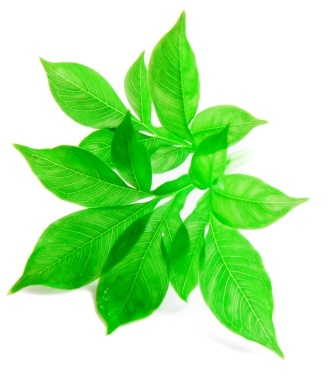
Morphology
Morphology of Amorphophallus campanulatus:
Surana is a small plant growing to a height of 2 – 4 feet with a weak stem, blooms annually around the beginning of the rainy season. The leaves are 2 – 3 feet wide. The flower bud emerged from the corm as a purple shoot, and later bloomed as a purple inflorescence. The female and male flowers are on the same plant and are crowded in cylindrical masses as an inflorescence.The top part is responsible for secreting mucus that gives off putrid, pungent smell that is used to attract pollinating insects, the middle part of the inflorescence contains staminate, and the base of the inflorescence contains pistillate. The fruit is 3 – 4 inch in size, red colored and has 2 – 3 seeds. The tuber grows in big size, about 1 – 2 feet in diameter, dark brown in color. The plant grows in the wild all over India and is also cultivated for the tuber as a vegetable.
Properties, part used, dosage
Medicinal properties of Konjac:
Rasa (Taste) – Katu (Pungent), Kashaya (Astringent)
Guna (Qualities) – Laghu (Light), Ruksha (Dry), Teekshna (Pungent)
Vipaka – Katu (Undergoes pungent taste after digestion)
Veerya (Potency) – Ushna (Hot)
Karma (Actions) – Kaphavata shamaka (reduces kapha and vata dosha)
Prabhava (Special effect) – Arshogna (cures piles)
Part used – Tuber
Dosage –
Powder – 3 to 6 g
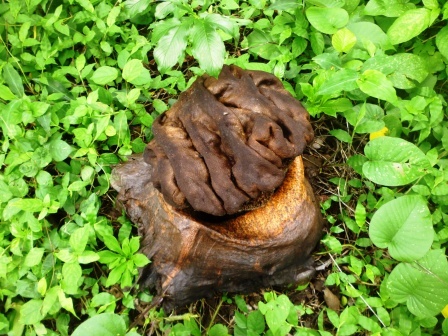
Properties as per Bhojana Kutuhalam
According to Bhojana Kutuhalam eleventh chapter, Surana is pungent and hot in potency, It promotes digestion and alleviates vata related disorders. It checks dyspnoea, cough, disorders of kapha and especially hemorrhoids.
Raktasurana is heavy for digestion and treats gulma, colicky pain, worm infestation and disorders of blood.
Swethasurana imparts taste, Is pungent and hot in potency. It treats gulma, abdominal colic, worm infestation and all forms of loss of taste.
In the twelfth chapter it is mentioned that the leaf of surana is penetrating in nature, dry, hot in potency and vikarsi. It is helpful in people suffering from worm infestation, vitiation of kapha dosha, hemorrhoids etc and its stalk has laxative properties and is heavy for digestion.
Chemical composition
Chemical composition of Amorphophallus campanulatus:
The corm contains an active diastatic enzyme amylase, betulinic acid, tricontane, lupeol, stigmasterol, beta – sitosterol and its palmitate and glucose, galactose, rhamnose, calcium oxalate and xylose.
Uses of Surana
- Tuber of surana is made into paste after adding it with ghee and applied over the leg affected with elephantiasis and swelling of the joint.
- The juice of surana kanda is consumed in a dose of 10 ml to treat piles, intestinal worms, indigestion and hepatomegaly.
- Tuber of Amorphophallus campanulatus is boiled and consumed in a dose of 15 – 20 g to treat amenorrhea.
- Cold infusion of tuber of Amorphophallus campanulatus is given in a dose of 15 – 20 ml to treat cough and asthma.
- The dried powder of the tuber of surana is mixed with buttermilk in a dose of 3 – 4 g and consumed to treat hemorrhoids and piles.
- Tuber of elephant yam is covered with mud, dried under sunlight and later burnt. The ash obtained is consumed in a dose of 5 – 6g to treat cases of internal growth like tumors.
- Surana is also used as a vegetable all over the world in many cuisines.
- Arshas (piles) – surana is anti-haemorrhoidal drug. Tubers and specifically given in piles caused by Kaphavata dosa.
Intake of buttermilk mixed with Surana Powder and Kutaja bark destroys haemorrhoids.
Arbudha – The Paste of Mature surana tuber mixed with sunthi and Pounded with water should be applied on the cyst frequently for a week.
Valmikasleepada – The paste of Surana tuber mixed with honey and ghee is applied to alleviate valmika and filariasis. [HS 3.36.7]
Tumour – the tuber or surana is burnt and then mixed with ghee and jaggery. Its paste destroys the tumour. [HS.9.37.6]
Sukradaurballya and Rajorodha – Corms are useful in seminal and menstrual complaints.
In cough, asthma and general debility surana is used.
It is the best rasayana drug.
The drug Surana is antihelmintic aromatic and carminative. It is used in abdominal diseases liver and spleen diseases and Piles.The tuber of surana pasted with earth should be cooked by closed heating. Then it should be taken with oil and salt. It destroys hemorrhoids. [AH.ci, 8-156]
Sanskrit verse
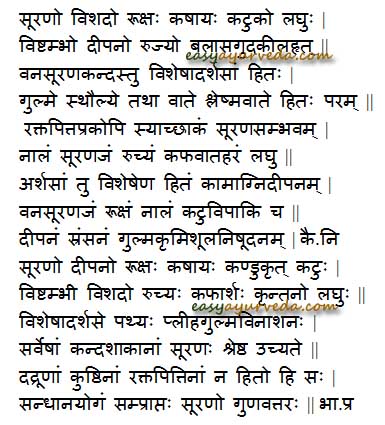
Traditional description, Indications
Traditional description of Stanley s water – tub,
Vishada – cleansing, clarifying
Rooksha – dry
Kashaya – astringent
Katu –pungent, spicy
Laghu – light to digest
Deepana – improves digestion strength
Indicated in
Vishtambha – constipation
Gudakeela – Piles
Gulma – Tumors of the abdomen
Krumi – worm infestation
Shoola – abdominal colic pain
Another variety – Vanasoorana is especially useful in
Arsha – hemorrhoids
Sthoulya – obesity
Vata and Kapha-Vata disorders.
The leaves
May worsen bleeding disorder
Considered best among Kanda Shaka.
Not ideal in Dadru – ringworm / tinea infection, urticaria, itching, allergic skin rashes and bleeding disorders.
Nala – stalk –
Ruchya – improves taste, relieves anorexia.
Kaphavatahara – Balances Kapha and Vata Doshas
Laghu – light to digest
Elephant Yam Snacks
Elephant Yam snacks – by Dr MS Krishnamurthy
Soorana (Elephant foot) – vataka
Tuber of Elephant foot is taken and outer skin is removed. This is made into thin slices and dipped in buttermilk for a while so as to reduce its irritating nature. This is allowed for drying. These slices are dipped in the solution made up of sesame powder, asafoetida, cumin seeds and rock salt. The slices are fried in oil or ghee and served. Reference: Bhojana Kutoohala
Qualities and actions – Lekhana (scraping), heavy to digest, laxative, appetizer, Kapha and Meda vilayanakaraka (lipolytic) in nature.
This dish is useful in hemorrhoids, ulcers, chronic wounds, obesity etc.
Read related –
Side effects
The tuber can cause throat irritation, oral ulcer and dryness of the throat. To reduce or prevent these adverse effects, it is necessary that the tuber should be cut and boiled in hot water after adding it with lime or tamarind.
Many Species which are of wild variety or vanya surana are highly irritant on account of the presence of crystals or calcium oxalate. These are less abundant in the corms or cultivated plants or gramya Surana.
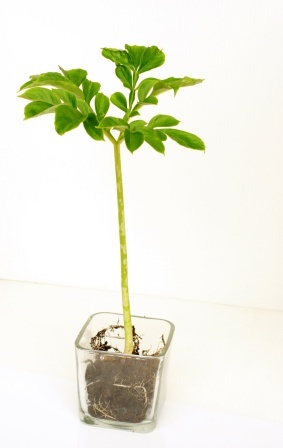
Surana is contra – Indicated in pittaja vikara and rakapitta and also other conditions where usna, tikshna and ksobhaka diet or food are restricted.
Usage or vanya surana (wild variety) causes mukhapaka, kantahara, kandu, upadrav.
Interaction with medicines, supplements
Can this be used while taking Homeopathic medicine?
Yes. This product does not react with homeopathic medicine.
Can this medicine be continued while taking supplements like multivitamin tablets, Omega 3 fatty acids etc?
Yes. Generally, this product goes well with most dietary supplements. However, if you are taking more than one product per day, please consult your doctor for an opinion.
With western medicines
Seek your doctor’s advice if you are taking this product along with other western (allopathic / modern) medicines. Some Ayurvedic herbs can interact with modern medicine.
If both Ayurvedic and allopathic medicines are advised together, then it is best to take Allopathic medicine first, wait for 30 minutes and then take the Ayurvedic medicine.
Ayurvedic medicines
Ayurvedic medicines containing Surana:
Surana vataka: It is used in treatment of piles, indigestion, malabsorption syndrome, cough, cold, bronchitis, asthma, spleen disorders, inflammatory conditions, hiccups, fistula, urinary tract related diseases. It also acts as aphrodisiac, rejuvenative.
Surana avaleha: The medicine is in a leha form which is used in the treatment of hemorrhoids, fistula and digestive diseases.
Kultab tablet: Kultab Tablet is a proprietary Ayurvedic medicine which reduces swelling of veins, checks bleeding piles, controls inflammation and overcomes constipation.
Bahushala guda: It is a medicine in leha form, mainly used in the treatment of piles, fistula, ascites, anemia, liver diseases.
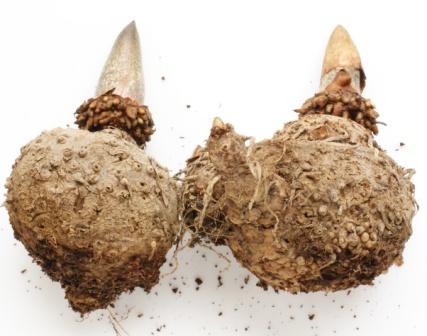
Arshonyl tablet: Arshonyl Tablet is a proprietary Ayurvedic medicine, used in the treatment of ano – rectal disorders.
Urshoset tablet: It is a proprietary Ayurvedic medicine, used in the treatment of piles and constipation.
Research
Research articles related to Amorphophallus campanulatus:
Anti – diabetic action: In the present study, the effect of the acetone extract of elephant – foot yam (Amorphophallus paeoniifolius (Dennst.) Nicolson) at 0.1 and 0.25% in the diet of streptozotocin – induced male Wistar diabetic rats was studied. A concentration – dependent amelioration of the diabetic status was observed with respect to all the above studied parameters. FBS of AEFD0.1 and AEFD0.25 groups showed a 23% and 37% reduction, respectively whereas the AFD group showed a 45% reduction relative to the SFD group.
Hepato – protective action: The present study was aimed to evaluate the hepato – protective effect of the dried tuber of Amorphophallus campanulatus (MAC) against acetaminophen induced hepatic injury in albino rats. Pretreatment with MAC reduced the biochemical markers of hepatic injury like serum glutamate pyruvate transaminase (SGPT), serum oxaloacetate transaminase (SGOT), alkaline phosphatase (ALP), bilirubin (BRN) and total protein shows hepato – protective activity.
Anthelmintic activity: Methanolic extracts of the tuber of Amorphophallus paeoniifolius were investigated for its anthelmintic activity against Pheretima posthuma and Tubifex tubifex. The extract with the concentrations of 25, 50 and 100 mg/ml were tested in the bioassay, which involved determination of time of paralysis and time of death of the worms. The extract exhibited significant anthelmintic activity at the highest concentration of 100 mg/ml. The extracts were found not only to paralyze (Vermifuge) but also to kill the earthworms (Vermicidal).
Anti – bacterial action: The aim of the present study was to assess Amorphophallus paeoniifolius tuber and its peel for its antibacterial activity.The tuber and peel extracts of the selected plant were tested against five pathogenic bacteria. The ethanolic tuber extract of the plant showed inhibitory effect on four bacterial species such as Staphylococcus aureus, Pseudomonas aeruginosa, Escherichia coli and Streptococcus mutans.
Classical categorization
Classical categorization of Sooran Kand:
Bhavaprakasha – Shaka varga
Kaiyyadeva Nighantu – Oushadhi varga
Raja Nighantu – Moolakadi Varga
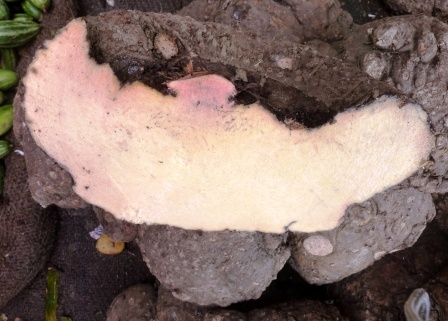
Scientific classification
Kingdom: Plantae
Order: Alismatales
Family: Araceae
Genus: Amorphophallus
Species: A. campanulatus
Traditional references
In Susruta Samhita 46th chapter properties of Surana is mentioned
In Astanga Sangraha Chikitsa Sthana 8th chapter 156 the properties, synonyms and uses of Surana are mentioned.
In Astanga Sangraha Sutra Sthana 13th chapter the use of Surana is mentioned.
In Haritha Samhitha 3-36-7 there is mention of Surana in various diseases.
In Bhavaprakash Nighantu Shaka Varaga [91 & 93] there is mention of gunas of surana.
In Kaiyadeva Nighantu Oshadivarga [1588-1589] there mentions uses and verities of surana.
In Raja Nighantu mulakadi varga 62– 64 there is mention of the use of surana.
In cakradatta arsha chikitsa [5-20] there is mention of arshaputupaka.
In sharangadhara samhita [2-1-41] there is also mention of arshaputupaka.
In sodala nighantu there is reference to surana putapaka.
In dhanvantari nighantu properties of surana are m
Distribution, habitat
Plant is cultivated throughout the plains of the country. It is cultivated in India and Srilanka Plants are also found in wild states. It is also grown in forest and also cultivated in gardens and it is sweet in taste
In India it is found in UP, AP, Karnataka, Goa and Rajasthan.
There are two varieties of surana –
Gramya (cultivated),
Vanya (wild
Author: Dr.B.K.Prashanth M.D (Ayu), Ph.D
E mail: [email protected]
Click to consult Dr Prashanth BK
Systemic action
External use – Analgesic, Anti inflammatory in action. External application of its paste with honey or ghee is Indicated in Joint inflammation, Elephantiasis, unwanted growth etc.
Digestive System – Carminative, Liver stimulant, facilitates normal movement of doshas, Anti helminthic, Antispasmodic in nature. Indicated in Hemorrhoids, which helps to constrict the pile mass. Normalize liver function. Over consumption can lead to gastric abdominal distension. Indicated in Anorexia, loss of appetite, constipation, Gulma, Kapha vata Arsas etc.
Respiratory system – Pacifies kapha dosha. Indicated in Cough, breathing disorders etc.
Reproductive system – Its root tuber is Aphrodisiac and is indicated in Oligomenorrhea.
Satmikarana – Balya and Rasayana It is indicated in general debility.











2 comments
Shirish kurulkar
It is said that it brings prosperity to it’s eater. How come?
Dr J V Hebbar MD(Ayu)Author
It means that it brings good health.